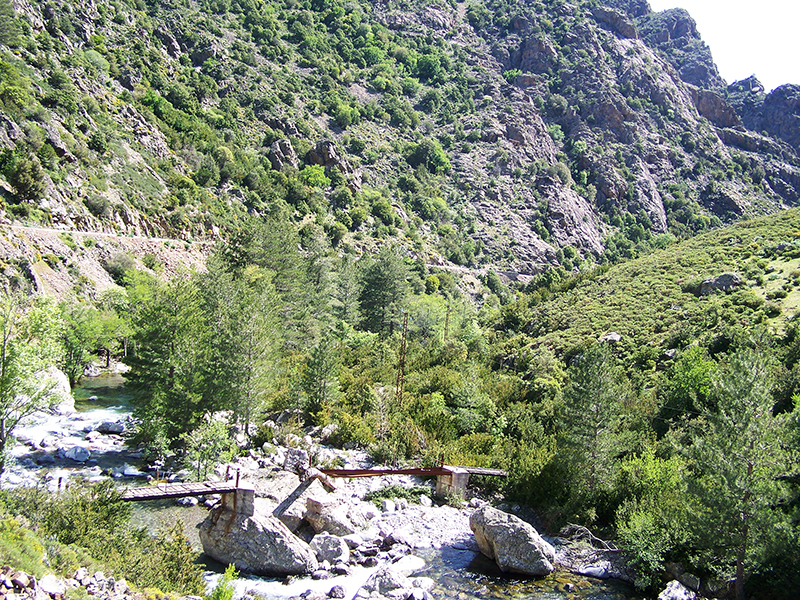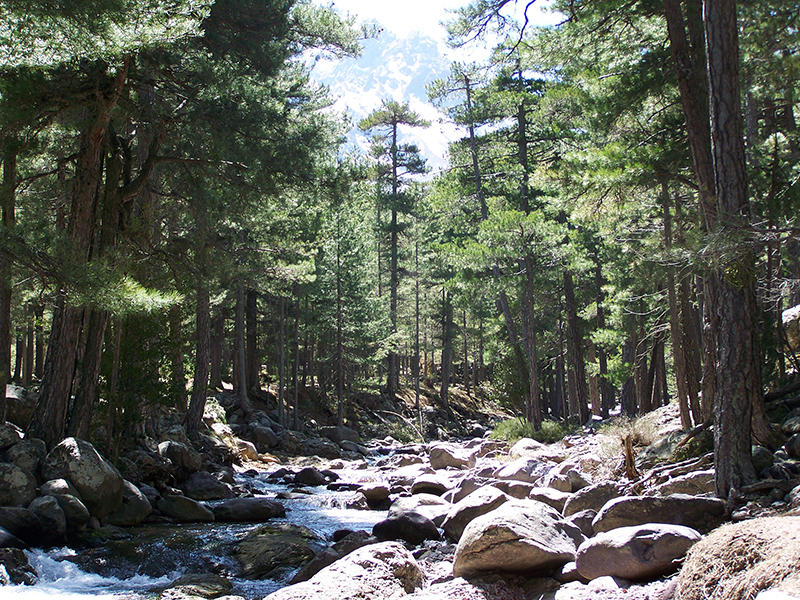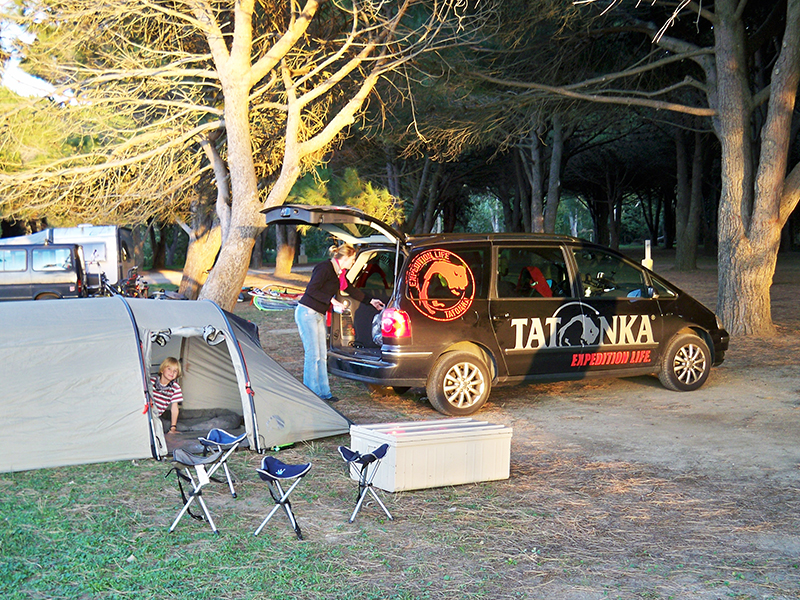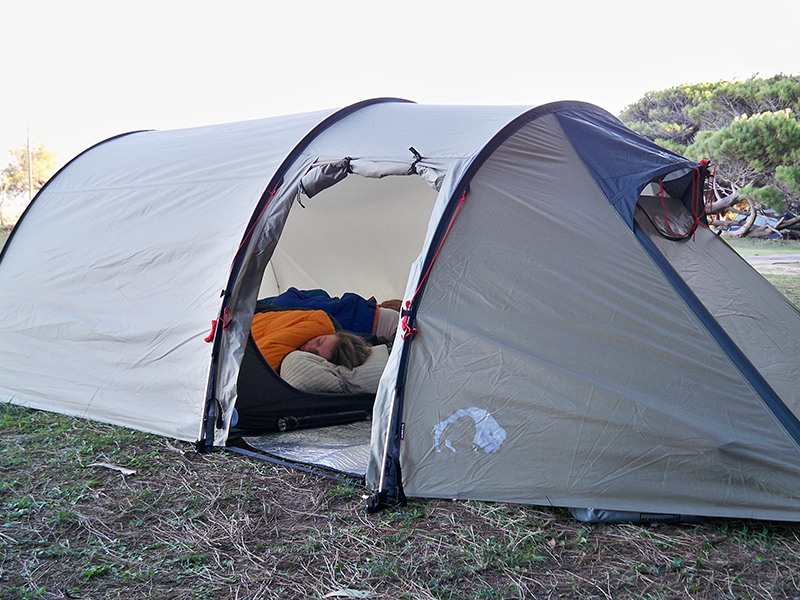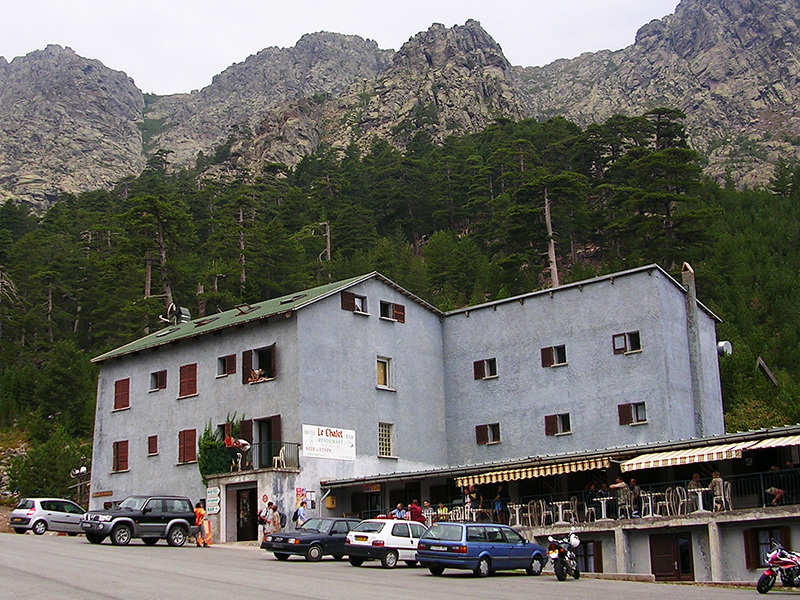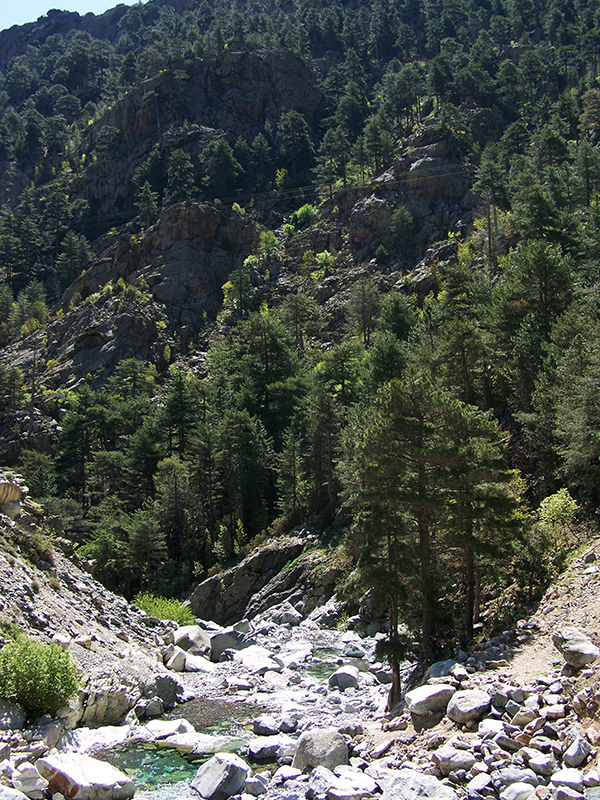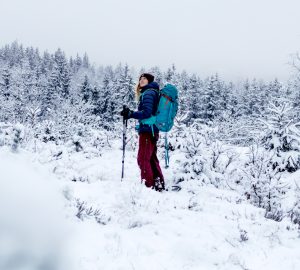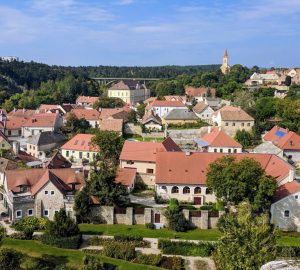Corsica, the “Island of Beauty” as it is often referred to, is probably one of the scenically most beautiful and diverse islands in the Mediterranean Sea – and for our colleague Ramin Poursaidi it is almost a second home. In this report, he will introduce to you the Asco valley.
The Asco valley stretches up to the high mountain range all the way to the foot of Monte Cinto. You go north from Ponte Leccia and, after a few kilometres, turn left onto the D147. The narrow, bendy but yet well-built road winds through the valley for 33 km and ends in Haut Asco on 1,450 m, where there can be snow even up to May.

Spectacular tour for bikers
The drive to Haut Asco is very popular with motor bikers and cyclists. The route is rather tedious for campers or caravans because the road is as parts very narrow and steep. The first kilometres of the D147 mostly go straight and lead past meadows and fields with the river Asco runs to the right. Past great built-out, shady camping sites and the tortoise farm “Le Village des Tortues” (don’t miss this one out!), the terrain gets rugged and the granite rocks steeper and higher. Just before the road changes to the other river bank via a narrow stone bridge, you have the chance to take a refreshing bath at one of the biggest pools of the river Asco. There is a rather vast parking ground but unfortunately, it has a height restriction.
After crossing the river, leaving the river Asco running through a canyon to the left below the street, the D147 becomes even narrower and steeper. The granite walls tower up almost vertically and make the road look like a miniature asphalt path. Past one of the most challenging via ferratas of Corsica, the Via Ferrata A Manicella (spectacular but only for experienced hikers), the road goes on to the former shepherd village of Asco where around 130 residents still enjoy the quiet and desultoriness of the Corsican alpine world.
Also interesting: Hiking with kids in Corsica – Rambling and canyoning with the family on the “Island of Beauty“
Refreshing swimming spots in the cool river
Just behind the village, a small trail leads to a Genuese bridge. During summer, the partly rather shallow river Asco provides you with the possibility of a bath in the river. Further down on the D147, the landscape changes again – at the latest when the road crosses the river for the second time.
From there, the river Asco turns into something more like a torrent that is now called “Stranciacone”. We continue through a thick black pine forest, which provides living space for wild life like mouflons and golden eagles. Cattle as well as the Corsican hog can be found often at the D147, grazing at the side of the road. The green and blue water of the torrent glints through the black pine forest. The torrents gets narrower the higher it gets.
This is also a great spot for a break and to enjoy footbath in the cool water. Just before you reach your destination, the road leads past the “Camping Monte Cinto” which is open from May to October.
Taster session on the GR 20
The road leads higher and higher up to Haut Asco for only a few more kilometres. The former winter sport resort has several huts (Refugios) and a restaurant that is open all year.
In Haut Asco, you stroll along the GR 20 (Grande Randonnée 20), one of the most beautiful and challenging hiking trails of Europe, which leads through the Corsican high mountain range for around 180 kilometres.
It starts in the North of the island, in Calenzana, and ends in the South in Conca. The high-mountain part in the North is known as the difficult part; the trails becomes more moderate towards the South.
If you want to get an idea of just how challenging but also impressive the northern part is, get on the GR 20 from Haut Asco. There, in the high mountain range, at the foot of the Monte Cinto, Corsica’s highest mountain (2.706 m), the “roof of the island”, you can taste the mountain air and the terrain during a day tour. Here also ends the third stage for hikers of the GR 20, who come from the North.





